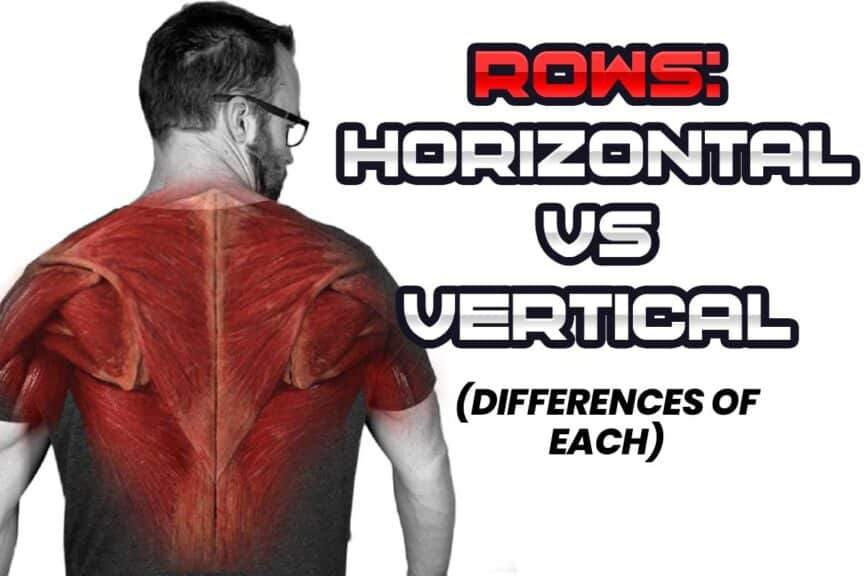Is there really a difference between vertical rows and horizontal rows? Kind of, but also, not really (how’s that for an answer?). Any time you’re pulling weight towards you, you’re using specific muscles on the back of your upper body. Still, muscle recruitment can change quite substantially based on a couple of factors. If you’re just starting out with weight training, this article will provide some key insight to better understand the world of vertical rows and horizontal rows when exercising.
Generally speaking, vertical and horizontal rows train the same muscles (primarily the latissimus dorsi and rhomboids) when the torso is at certain angles and different muscles when at others. Grip width and hand position play a large factor in determining which muscles work most when rowing.
Essentially, there are times when a vertical row will mirror the demands and challenges for the muscles as a horizontal row. The deciding factor for a vertical row functioning as an entirely different exercise altogether is the angle at which the body’s torso is held during the movement.
If you want to learn more about why this is and which row is likely best for you, keep reading!
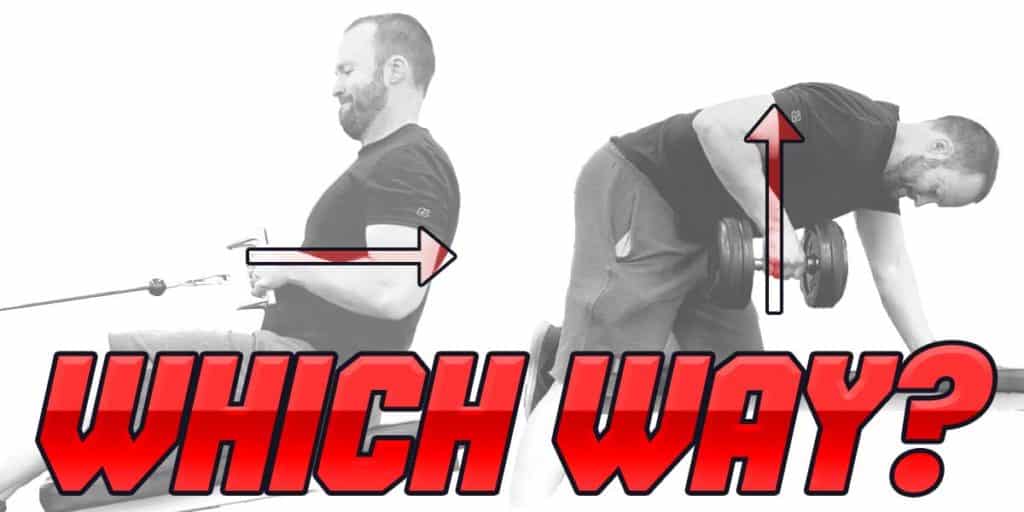
ARTICLE OVERVIEW (Quick Links)
Click/tap on any headline below to instantly read that section!
• Which row is best for you
• The major muscles of nearly every row
• How torso angle changes muscle demands
• Which grip for which muscles
• Benefits of vertical rows
• Benefits of horizontal rows
Related article: The Best Renegade Row Alternatives: Five Awesome Variations to Try
Which row is best for you
Let’s start off with the information that is likely most pertinent for you:
There’s no right answer when it comes to picking which row is best for you. Ultimately, as long as you’re performing rows that are challenging (but ones that you can complete with good form), you’ll likely be fine with either vertical or horizontal. It can become a bit of a different story for advanced bodybuilders or other highly specialized athletes, but for those who are just looking to get stronger and overall healthier, it likely doesn’t matter.
What’s likely more important for you to focus on is the type of grip that you use. The width of your grip and the type of grip (overhand, underhand or neutral grip) can significantly influence which muscles are targeted the most.
While both vertical and horizontal rows work most of the back muscles, you’ll likely want to pick which type of row to perform based on which muscles you’d like to target the most.
To be clear: either type of row will target the same group of muscles, but you can bias which muscles work a bit more or a bit less, depending on which positions your arms/hands are in. Read the following sections if you want to learn the specifics of which grip affects which muscles.
The major muscles of nearly every row
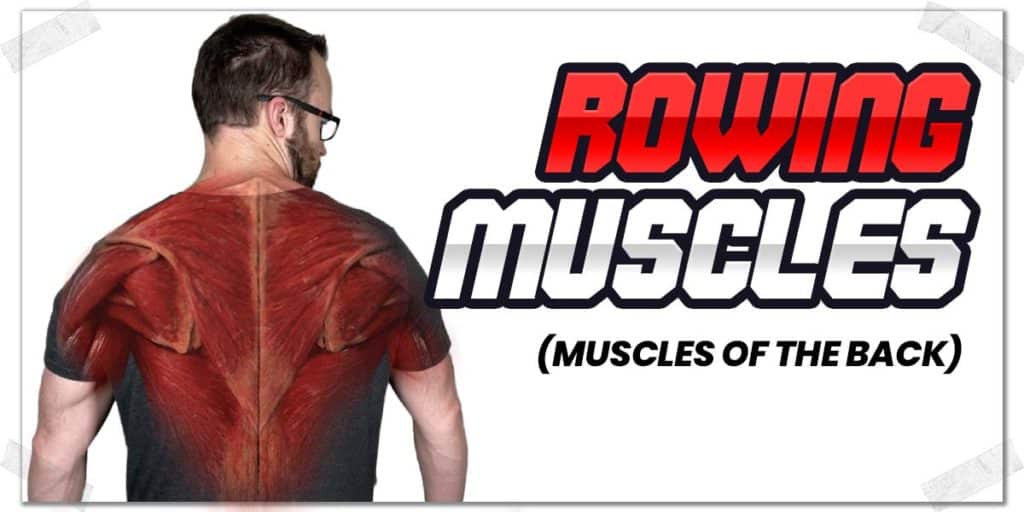
Regardless of the row being vertical or horizontal, it’s vital to understand that multiple muscle groups of the back will always be involved to help perform the movement. However, which muscles are emphasized to a greater extent will vary based on the direction of the row and the grip type and width.
Let’s run through some rather rudimentary anatomy of the muscles on the back. It will help clarify the concepts being addressed within this article and help you have more confidence in selecting the type(s) of row(s) that are best for you.
The primary movers (known as agonists) for vertical and horizontal rows include:
- The latissimus dorsi
- The rhomboids (rhomboid major & minor)
- The trapezius (upper, middle & lower fibers)
The smaller muscles that help assist and fine-tune the movement (known as synergists) include:
- The posterior deltoid fibers
- The infraspinatus
- The teres minor
- The teres major
Let’s quickly take a look at the primary or agonistic rowing muscles in a bit more detail:
Muscle function: the latissimus dorsi
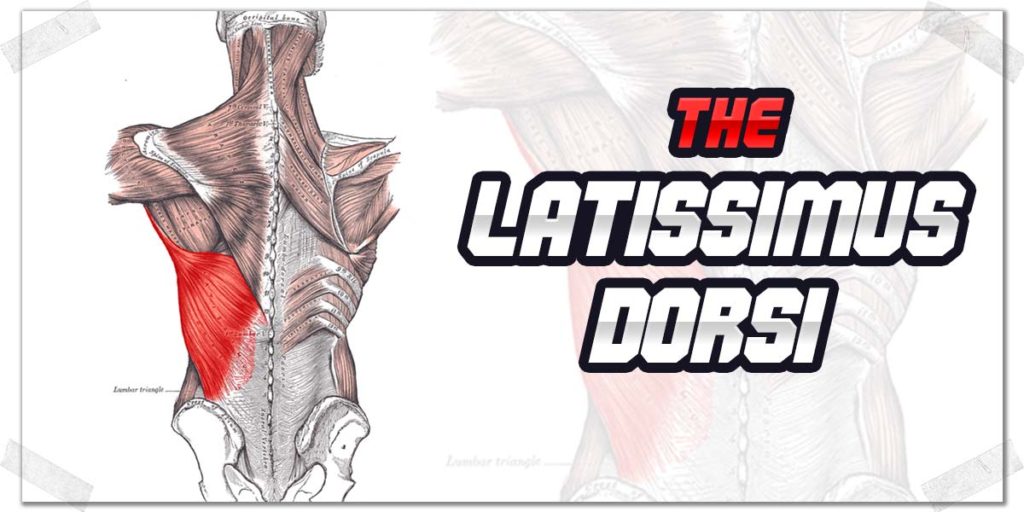
The latissimus dorsi (often shortened to “the lat” or “lats”) is the large muscle on your mid-back (there’s one on each side). In fact, it’s the largest muscle in your body (in terms of surface area).
Each lat runs from the mid-lower back and inserts onto the upper arm bone (the humerus).
The latissimus dorsi has three functions:
- Pulling the arm behind you (extension)
- Pulling the arm towards the middle of your body (adduction)
- Rotating the upper arm inwards (internal rotation)
As a result of these functions, any time you pull your arms downwards (when starting above your head), pull your elbows behind you or pull your arms down towards your hip pockets (when starting from raised out to the side), you’re primarily using your lats to perform the movement.
Muscle function: the rhomboids
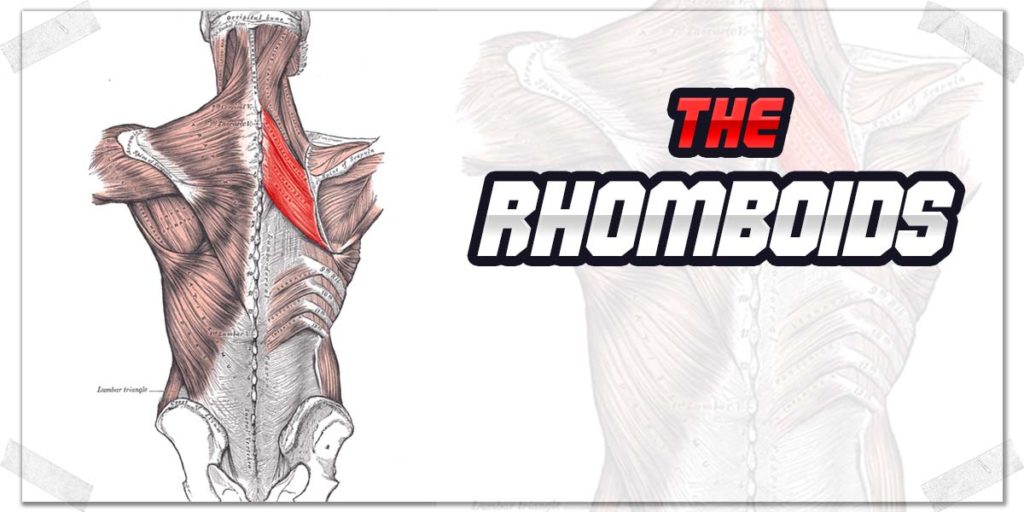
The rhomboids are a pair of muscles that sit in between the shoulder blades. Just like the lats, there is a pair on each side of the back. Each pair attaches from the spinous processes of the thoracic vertebrae and attaches onto the medial border of the scapula.
There are two rhomboid muscles:
- The rhomboid major
- The rhomboid minor
The function of the rhomboids is to pull the shoulder blade back towards the center of your spine. When you’re squeezing your shoulder blades together, you’re using your rhomboids to do so.
Muscle function: the trapezius
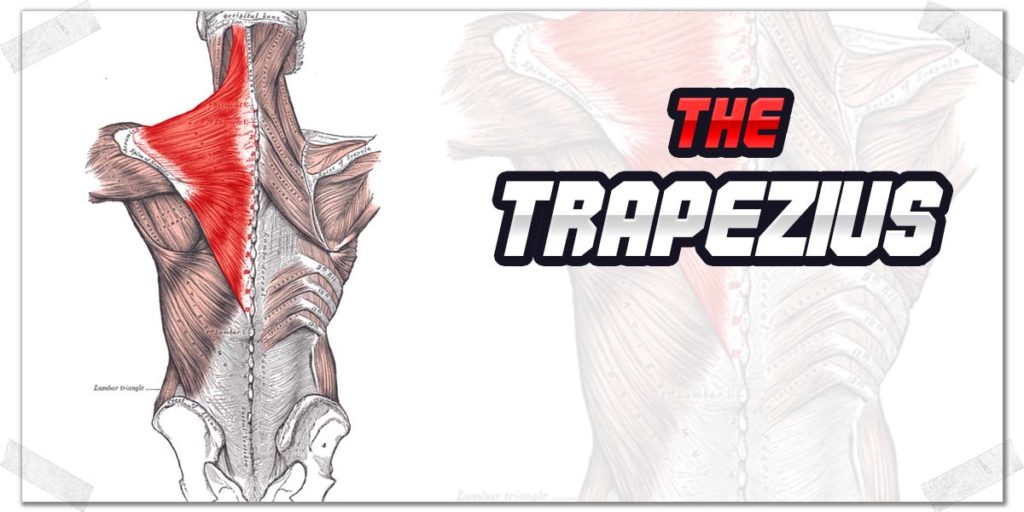
The trapezius muscle is the large muscle on the upper portion of your back, shaped like a trapezoid (hence the name). It runs from the base of the skull out to the shoulder blades and down to the middle portion of the vertebrae of the spine. It’s a massive muscle and has different functions depending on which portions of the muscle are being targeted.
The trapezius, although one continuous muscle, is divided into three sections on each side of the back:
- The upper fibers
- The middle fibers
- The lower fibers
The upper fibers play a significant role in performing the upwards shrugging motion of the shoulders, which elevates the shoulder girdle. If you’ve ever performed shoulder shrugs in the gym, these were the fibers of the trapezius that you were targeting.
Related article: Why Your Upper Back Gets Sore from Front Squats (And How to Fix it)
The middle fibers run predominantly in a horizontal direction. As a result, they help pull your shoulders backwards (known as shoulder girdle retraction). These fibers perform a broadly similar role to the rhomboid muscles.
The lower fibers also help with shoulder girdle retraction and work to assist with rotating the shoulder blade in an upwards direction, known as upwards rotation.
How torso angle changes muscle demands
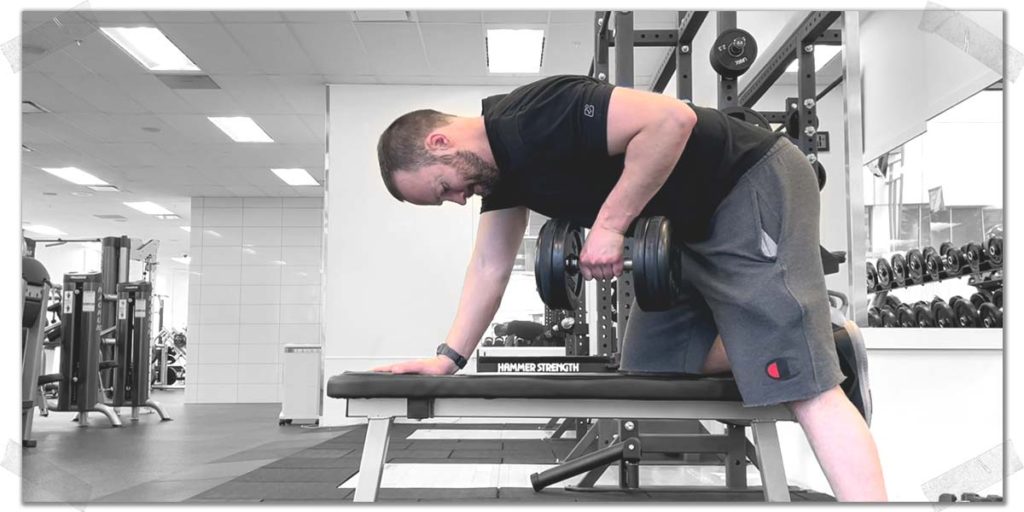
If you’re pulling weight vertically (i.e., rowing upwards), there’s a simple rule to keep in mind when it comes to changing which muscles are producing the greatest amount of work:
The more upright your torso is while pulling the weight upwards, the more the trapezius muscle will contribute to the movement, especially the upper fibers of the trapezius muscle. Conversely, the more horizontal your torso is during a vertical row, the less the trapezius muscle will be involved.
It’s worth noting, however, that the middle portion of the trapezius fibers will be active when your torso is parallel to the floor but not nearly as much as the latissimus dorsi muscle.
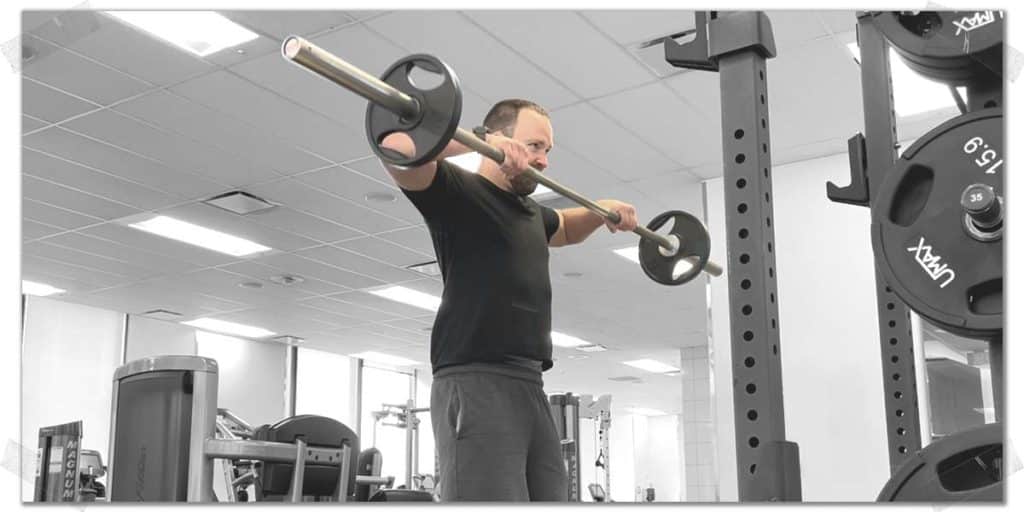
Again, neither type of row is right or wrong; it all depends on your own abilities and needs. Often times you’ll see lifters performing rows with their chest resting on an inclined bench (where their torso is at roughly a 45-degree angle from the floor). This type of row targets the lats, rhomboids, mid, and upper traps simultaneously.
Which grip for which muscles
As stated earlier, the type of grip you use when performing a rowing exercise will likely have a much more significant impact on which muscles are most active during the movement than whether you perform a vertical or horizontal row. Here’s a quick rundown on the three most common different grips that are used for pulling exercises:
The overhand grip
The overhand grip is the most commonly utilized grip when performing rows. This is the grip where your hands wrap around the bar with your palms facing down. When using this grip with horizontal rows or vertical rows with a horizontal torso, a stronger emphasis is placed on the middle trapezius fibers and posterior deltoid fibers than with a neutral grip, and likely with an underhand grip as well.
When performing lat pulldowns (a type of vertical row) with this grip, the lat and teres major muscles are recruited significantly.
The neutral grip
The neutral grip is another commonly utilized grip. It involves the palms facing one another (if performing a double-arm row) or your palm facing the midline of the body (if performing a single-arm row). It strongly emphasizes the lats and rhomboids as the primary movers for both vertical and horizontal rows.
The underhand grip
The underhand grip tends to be utilized much less frequently by average gym-goers but is still commonly seen. This grip involves the palms facing upwards during a row. It places a near-identical emphasis on the back muscles as with the overhand grip; however, it also places a much greater emphasis on the biceps muscles in the arm.
Benefits of vertical rows
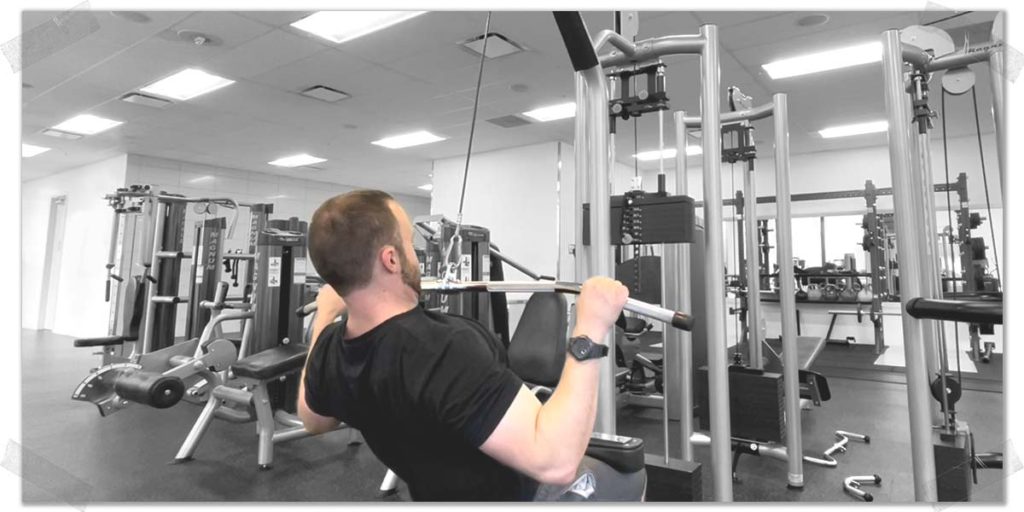
One of the unique benefits of vertical rows is that a vertical row can be performed by either pulling weight upwards or downwards (if using a pulldown machine for the latter).
As a result, vertical rows are often much more versatile since they can be performed with simple exercise equipment, such as dumbbells and barbells, provided you’re pulling the weight upwards.
Some great vertical, upwards rowing exercises include:
- Bent-over dumbbell rows (with a dumbbell or barbell)
- T-bar rows
- Single-arm landmine rows
Any of these exercises can be performed with basic, free weight equipment.
The only real option (though a very good one) for downwards rowing is the pulldown, whether it’s lat pulldowns, V-bar pulldowns, etc. Pulldowns can either be done on a cable machine (the most traditional form of the pulldown exercise). However, there are also plenty of plate-loaded exercise machines that are designed for pulldowns as well.
Benefits of horizontal rows
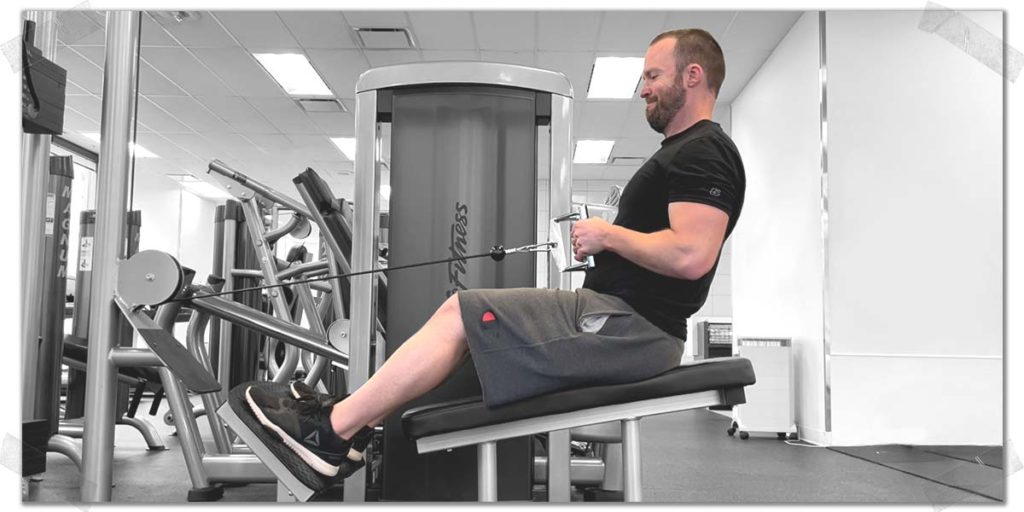
Horizontal rows can be a great option for those who have difficulties raising their arms overhead. Some situations might involve those with shoulder issues, such as when dealing with a shoulder injury (such as a rotator cuff injury), subacromial impingement or adhesive capsulitis (frozen shoulder). Any of these conditions can make it difficult or painful (or both) for a lifter or individual to let their arm raise above their head.
Horizontal rows tend to eliminate this problem since the arms stay parallel with the ground. It is worth noting, however, that hand/grip position can influence shoulder discomfort with some of the conditions mentioned above.
The downside with horizontal rows is that they require dedicated exercise equipment to perform the movement, except if you’re performing the movement with exercise bands attached to a stationary object.
Final thoughts
Don’t overthink things too much when it comes to wondering whether you should perform your rows in either a vertical or horizontal direction. Unless you’re quite the advanced bodybuilder or sports athlete (in which case, you likely already knew everything in this article), you’ll be just fine with whichever type of row you pick, be it horizontal or vertical.
If anything, focus more on your grip selection with your rowing exercises. This will have a much more profound impact on how your muscles are targeted. And above all else, keep training hard and training smart!

Hi! I’m Jim Wittstrom, PT, DPT, CSCS, Pn1.
I am a physical therapist who is passionate about all things pertaining to strength & conditioning, human movement, injury prevention and rehabilitation. I created StrengthResurgence.com in order to help others become stronger and healthier. I also love helping aspiring students and therapists fulfill their dreams of becoming successful in school and within their clinical PT practice. Thanks for checking out my site!

